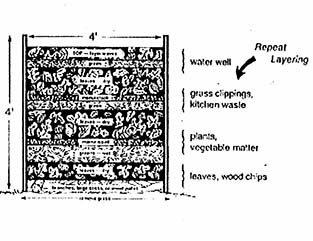LILACS grow best in full sun, in well-drained soil, with one cup of 8-8-8 and 3 cups of agricultural lime placed underneath the foliage mass every 3 years. The Persian and Korean lilacs are often preferred over the common lilac.
PRUNE SPRING FLOWING SHRUBS. Just as flowers begin to fade is the best time to prune spring-flowing shrubs, such as the spireas, flowering quince, azaleas, viburnums, and forsythia.
MARTIN BIRD & BLUEBIRD HOUSES can go up by mid-March.
CARE OF SHADE TREES – (1) Never disturb the root system, any digging or hoeing which damages roots can slow tree growth; (2) keep grass away from the tree trunk for the first few years to reduce the competition for nutrients and water. The mulched area should extend to the tree’s drip line. Avoid deep mulches around the base of the tree.
DIVIDE ESTABLISHED PERENNIALS that are overgrown. This is an easy way to enlarge your garden without having to purchase more plants. Two spading forks can be used to separate clumps of overgrown perennials.
APPLY PRE-EMERGENT HERBICIDES to shrub beds by mid-March. Popular materials for weed control are Surflan, Dacthal, Devrinol, and Ronstar. Use these chemicals before mulching the beds.
REPOT HOUSEPLANTS – To keep potted plants healthy they should be repotted each spring, scrub and old pot with soap and water or a 10% Clorox solution before reusing and repot in good garden soil and peat moss or better yet, use commercial potting soil. Do not fertilize the first month.
FOR A LOW MAINTENANCE LANDSCAPE, plant areas of dense shade with ground covers (examples are Pachysandra, periwinkle, ajuga, or ivy, and sweet wooddrift) instead of grass. Ground covers are also especially useful in an area susceptible to erosion.
PRE-EMERGENT WEED CONTROL FOR TURF. Crabgrass preventers should be applied while the forsythia is in bloom.
VOLES OR (PINE MICE) can ruin prize ornamentals by chewing away the bark on trunks and roots. Populations build up during the winter months. To control voles use snap traps baited with a piece of apple. Hardware cloth wire mesh can be wrapped around the lower trunks of specimen plants. Rozol bait is approved for chemical control.
PLANT COOL SEASON VEGETABLES (beets, carrots, Swiss chard, lettuce, onion sets, radishes, and spinach.)
MULCH STRAWBERRY BEDS at bloom time to keep berries clean.
CUT back old strands of ivy to 3 inch heights.
FERTILIZE AND LIME VEGETABLE garden before planting.
PLANT A TREE for Arbor Day.
TUNE UP garden equipment.
TUNE UP YOURSELF. A regimen of exercise before the garden season will prevent back injuries.
TURN A 5-GALLON BUCKET into a tool holder/garden basket by tying a carpenter’s tool pouch to the outside.
USE FROZEN JUICE CONCENTRATE containers, paper towel inner rolls cut into 3 inch rings to protect seedlings from cutworms.
PRUNE OFF faded flowers of daffodil but leave the foliage undisturbed.
FERTILIZE BOXWOODS once each year with a mix of cottonseed meal and 10-10-10 fertilizer – use 1/4 cup per plant.
USE POLYESTER plant covers or bed sheets for frost protection in the garden.
FERTILIZING TREES AND SHRUBS – Now’s an excellent time to apply fertilizer before the new growth begins. Use a special nursery fertilizer, 10-10-10, or a law fertilizer with the nitrogen less than 18%.
TREES: Deep-feeding gives best results in compacted soils. Surface feeding often is consumed by grass and tends to bring tree roots to the surface to be damaged by heat. So, fertilize trees by making a series of 1 1/2 inch diameter holes, 6-8 inches deep. Begin holes about 4-6 feet from the trunk, and extend them just beyond the spread of the branches. Holes should be slanted at a 45 degree angle, not straight down. Use 1 to 1 1/2 pounds complete fertilizer (10-10-10) per year of age of tree.
SHRUBS: Most shrubs respond well to a feeding of high nitrogen (slow release) fertilizer such as 16-4-8 or a special nursery blend. Do not permit fertilizer to touch stems of plan. Apply 2 teaspoons per foot of plant height or spread. Evergreen shrubs need fertilizing only once a year.
